Applications
Ball Bearings & Energy Saving
Today there is a growing need for energy products with less impact on the environment. This demand will still grow in the future and improving the performance of machines and factories are challenges of tomorrow. It is in this context that JESA SA, a company specializing in the design and manufacture of ball bearings and polymer components measured in units, began to study technical solutions to make advanced performance ball bearings. The potential global energy savings is considerable, since it is in relation to components used on a large scale in a wide variety of applications.
For this development, a theoretical study was conducted internally and solutions were tested and validated on different test benches.
In the scope of this project, scientific collaborations have also been conducted with Swiss universities and schools of higher education.
The causes of friction in a ball bearing
Rolling bearings transmit a rotary motion between two bodies with little friction. This is thanks to the ball bearing which performs with minimal relative sliding upon surfaces. The friction, heat and wear is limited compared to other rotation guidance solutions, while also ensuring a high positioning accuracy and low noise.
Despite this, certain factors generate friction which translates into a dissipation of energy and heat generation adverse to high performance of the final product.
Standard ball bearings generally offer the best possible capacity for a given dimension. They are suitable for a number of applications, however, they represent a compromise which is not optimal for precise applications. In some cases, they can present friction greater than what would be necessary for the proper functioning of the application.
JESA SA provides bearings to measure which are developed on the basis of a specification. This approach offers the possibility to meet the demands of it’s customers with products optimized for their needs.
INTERNAL FRICTION AND OPTIMIZATION OF COMPONENTS
Joints
The main cause of friction in a sealed ball bearing is generally friction within the joints. This type of seal is often unavoidable since the bearings are exposed to a high level of contamination to ensure cleanliness necessary for their proper functioning. These elements generally consist of a thin sheet of coated synthetic elastomer type NBR, HNBR or FKM, selected according to the operating temperature. One or two flexible lips are in radial or axial support on the opposite ring to ensure airtightness. Research into pre-stressing optimization between the seal and friction equate to the best possible solution to increase the yield. One can reach up to a 50% reduction in friction thanks to the use of seals with an improved design without diminishing the seal. A special surface treatment is necessary to reduce the coefficient of friction of the material and thus reduce the friction.
Another area of optimization is the roughness of the metallic surface in contact with the bearings. When there is sufficient space, it is sometimes possible to replace seals and joints that are not making proper contact, which allows for a significantly reduced energy loss by ensuring the required tightness.

Figure 1: Double joints without friction
Shearing of the lubricant in areas of ball bearing contact
The primary role of a lubricant is to prevent metal-on-metal contact of the rings and balls, by separating the surfaces with a thin film. The asperities of the surfaces are thus excluded and do not come into collision, which allows for significant improvement and a longer service life of the product. The most common lubrication is lifetime lubrication with grease which offers ease of implementation. However, lubrication with circulating oil is sometimes necessary.

Figure 2: Detail of surface ball-rings in contact with mixed lubricants. In this method occasional contact of surfaces is possible. [Tedric A. Harris, 2007, Advanced Concepts of Bearing Technology, CRC Taylor & Francis Group, 140]
The choice of the viscosity and the type of base oil is critical to ensure optimal lubricant film thickness. A too high viscosity will cause unnecessary friction and temperature increase, while a low viscosity will cause friction of mixed types and limited collision of the asperities of the surfaces which results in a severe reduction in energy and life expectancy. There is no universal grease suitable for all applications. A grease measured accordingly, depending on the application, will optimize the lubricant film thickness and thus reduce the friction as well as extend the life expectancy.

Figure 3: Curve of Stribeck describing the different types of friction [Sksana Banakh, 2010, Treatments of surface and use in tribology, Course FSRM]
It is possible to specifically calculate the lubrication routine, taking into account the roughness of surfaces, the minimum thickness film of lubricant created according to the loads, relative rates, geometry and temperature as well as the characteristics of the lubricant.

- Λ = parameter of film thickness
- h min = minimum thickness of the film of lubricant formed [mm]
- Sr = RMS roughness (= 1.25 x roughness Ra [µm]) paths of ball bearings [µm]
- SRE = RMS roughness (= 1.25 x roughness Ra [µm])
For , the lubrication system is limited
- For the lubrication system is mixed
- For Λ < 3, the lubrication system is elastohydrodynamic
Different methods exist for calculating the minimum thickness of the film of lubricant in the contact area. One of the most commonly used is that of Hamrock and Dowson:

- h min = minimum thickness of the film of lubricant formed [m]
- a = coefficient of pressure/viscosity [m2/N]
- Ηo = dynamic viscosity at atmospheric pressure [Pa ·] s
- U = the surface drive speed. [m/s] Average linear velocity of the rolling body (UA) and the speed at the point of contact on the inner or outer ring (UB)
- E’ = Young’s modulus reduced [Pa]
- W = load on the body rolling [N]
- e = Euler number
- k = parameter of ellipticity of contact ellipse, report of the a/b semi-axles. May be approximated by:
- Rx = radius of curvature reduced in the x axis
- Ry = radius of curvature reduced in the axis y
Good surface tracks and balls are essential to ensure proper factors Λ > 3, without having to use an excessively viscous lubricant, and therefore to ensure a good rolling life duration while limiting friction. JESA SA is equipped with the most recent generation of machines, which provide a very high-quality finish and achieve excellent surface states.
Mix of the lubricant within the ball and cage
A part of the friction is created by mixing lubricant with the ball bearings and cage, it is during this time that grease is most heavily distributed upon the bearings. The geometry of the cage, the ball size, and the amount of balls influence the mix. The type of NLGI class soap thickener used in the grease, as well as the initial volume of lubricant also have an impact on the friction. The application will also be decisive when determining these separate parameters.
Internal geometry and friction in the points of contact of balls and rings
Because the materials used are not rigid and contact pressures are very high, there are elastic deformations of balls and tracks in the areas of contact. This deformation causes two principle types of friction:
1. Hysteresis losses
When a ball rolls on a surface, it forms a bead of material at the front of the point of contact, which should be deformed elastically so rotation can continue. Energy consumption is partially recovered by the material as it returns to its position at the rear point of contact, but not entirely. The energy difference corresponds to a loss through dissipation.

Figure 4: Rotation of cylinder and deformation of surfaces [Tedric A. Harris, 2007, Advanced Concepts of Bearing Technology, CRC Taylor & Francis Group, 129]
2. Micro-slipping
The area of contact between the balls and ball tracks has an elliptical shape more or less elongated depending on the radii of curvature selected for the ball in comparison to the diameter of the ball tracks. A relative slipping of surfaces is caused by the elasticity of the material, and only two points of the ellipse are rolling without slipping, in the case of a deep groove bearing radially loaded.

Figure 5: Detail of contact of ball bearing-path of ball showing the average RADIUS after deformation as well as two points A – A where there is purely rolling. [Tedric A. Harris, 2007, Advanced Concepts of Bearing Technology, Taylor & Francis Group, 45 CRC]
Most ellipses are extended and there are more sliding speeds at the ends of the ellipse, which increases the friction.

Figure 6: Detail of contact of ball-path of ball showing the lines of slipping and two points A – A where there is pure rolling. [Tedric A. Harris, 2007, Advanced Concepts of Bearing Technology, CRC Taylor & Francis Group, 46]

Figure 7: Detail of contact of ball-path of ball showing speeds of sliding amplitudes.[Tedric A. Harris, 2007, Advanced Concepts of Bearing Technology, CRC Taylor & Francis Group, 138]
Standard balls generally are created to maximize surface areas of contact between balls and rings, to reduce surface pressures and thus increase the carrying capacity of the bearing. Optimized performance is unfortunately impeded by friction that increases with the contact surface. Thanks to its advanced calculation tools, JESA SA is able to determine the optimal internal geometry to minimize friction, guaranteeing the lifetime performance that’s expected.
Friction of the cage on the balls and rings
The use of a cage allows limited friction by keeping the balls from rolling against each other, as is the case in a full ball bearing. The cage itself is in contact with the ball and sometimes also with the inner or outer ring, which causes energy loss as well as slipping by shearing off lubricant.
The quality of manufacture of the cage, its geometry, as well as the manner, in which it is manufactured, have an influence on the friction generated.
A range of engineering polymers and a low coefficient of friction are combined by JESA for the development of cages with low friction, which allows for reduced energy loss compared to a conventional steel cage, while providing better resistance against vibrations. A simulation of deformation of the high-speed cage can be carried out, if necessary, through finite element analysis software, in order to exclude any risk of excessive deformation resulting in unintentional contact.
Practical validation
It is difficult to accurately calculate the friction of a bearing, as the number of parameters that influence this value are more diverse. Certain programs are used to calculate a relatively accurate friction value for standard bearings, but the results may strongly diverge from reality, for special bearings.
JESA is equipped with a test bench to measure the friction of bearings for different methods of rotation. A practical validation calculation is made on this bench, so as to ensure the friction level of real products.
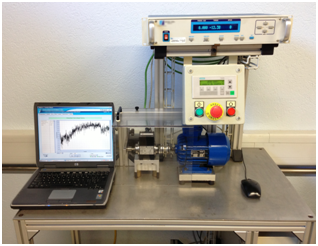
Figure 8: Bench test for measuring friction torque
A tribological test bench has been developed in collaboration with the School of Engineers in Freiburg and allows for precise quantifying of friction of various materials and coatings under load at variable speeds. An independent cell applies contact pressure of 0-4 ‘ 200MPa on two rings of tests, through 2 x 3 beads. This cell can be installed on a rheometer for measurements of friction or coupled to a motor to perform life tests.
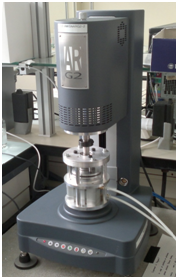
Figure 9: Cell test mounted on a rheometer
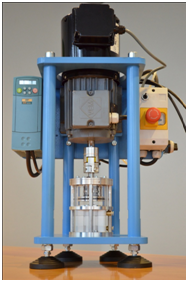
Figure 10: Cell installed for lifespan test
Specific example
Bobst SA is one of the world leading companies involved in the design and manufacture of machines for production of cardboard packaging. Some of these machines are large and utilize hundreds of bearings to support and guide flat belts, which are used to move the cartons through the machine.
These bearings are specifically for low loads and as standard bearings they are not adapted and optimized for heavy loads. JESA SA has proposed a special bearing optimized according to the needs and responsibilities of the customer. The construction and internal geometry have been revised as well as the quantity and type of lubricant used. These special no contact double-joints provide a good seal to the cardboard without effecting friction.
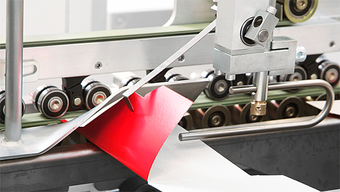
Figure 11: Detail rolling folder-gluer BOBST [www.bobst.com]
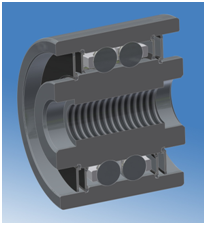
Figure 12: Special wheel developed by JESA SA
With such a product, it is possible to divide by 2, or even 3, the friction of the bearings. As one multiplies the amount of bearings per machine, significant energy savings can be achieved on the final product. The impact of the machine on the environment is reduced and lower operating costs are obtained.
Sources:
- Tedric A. Harris, 2007, Advanced Concepts of Bearing Technology, CRC Taylor& Francis Group
- Gwidon W. Stachowiak, Andrew W. Batchelor, 2005, Engineering Tribology, Elsevier, ISBN-10: 0-7506-7836-4
- Sksana Banakh, 2010, Treatments of surface and use in Tribology, courses FSRM

Contact Information
| JESA SA Headquarter Rte du Petit-Moncor 9 1752 Villars-sur-Glâne Switzerland Phone: +41 (0) 26 408 47 80~ Email: info@jesa.com Web: www.jesa.com |
JESA UK The Willows, Water Lane Someford keynes – Cirencester Gloustershire – GL7 6DS – United Kingdom Phone: +44 (0) 1285 869 047 Email: roger.cornwell@jesa.com Web: www.jesa.com |
Tagged ball bearings, energy saving, JESA
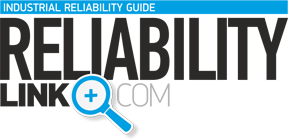
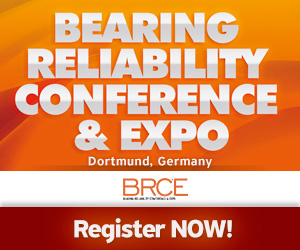
Pingback: Kata Kata Ucapan Lebaran Idul Fitri 2017/2018
Pingback: GVK BIO
Pingback: TS TV Escorts from London